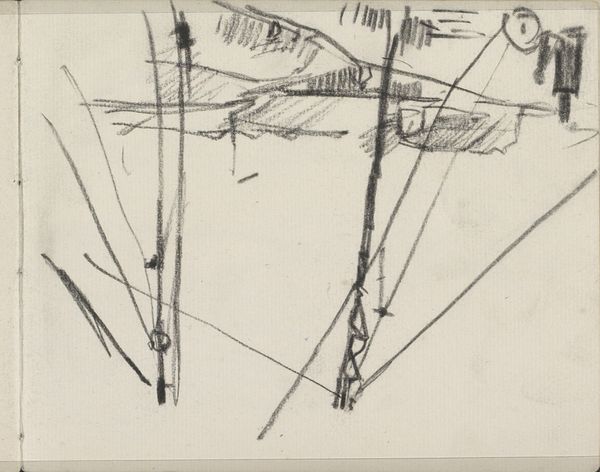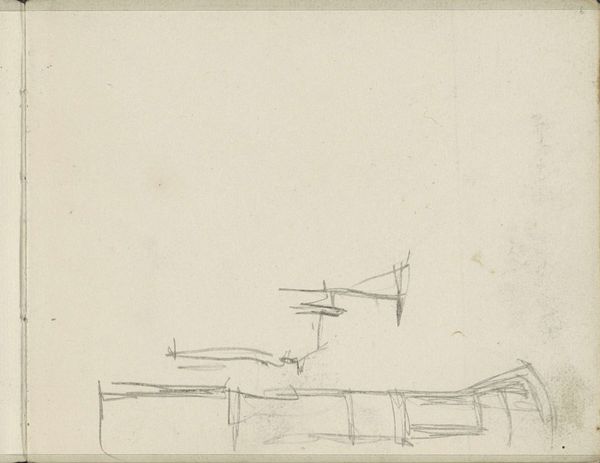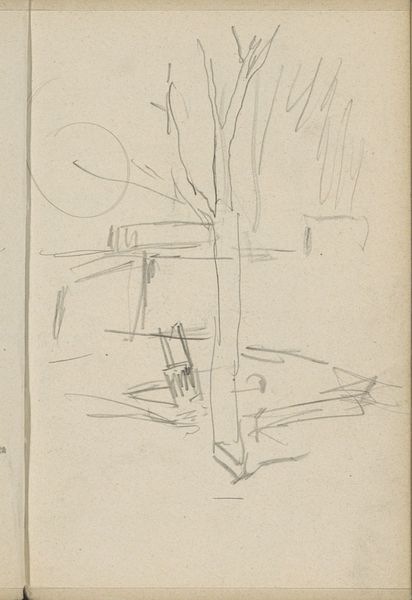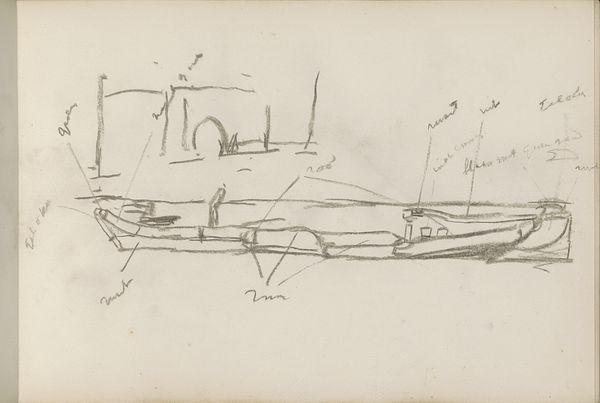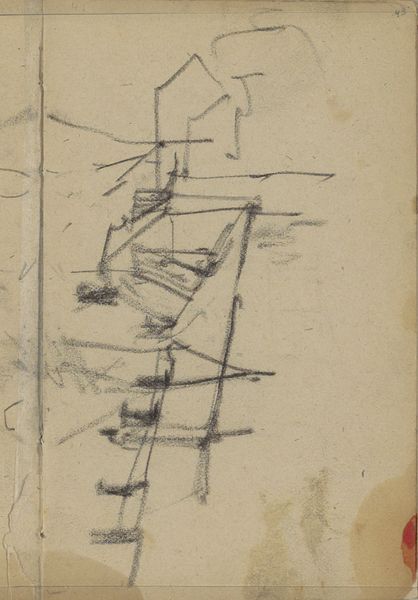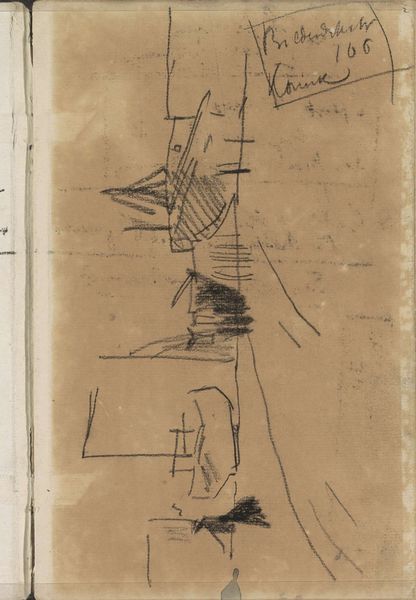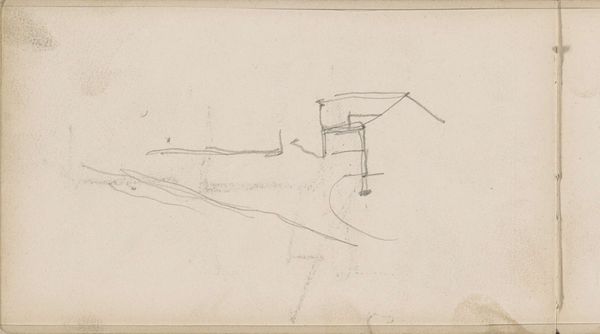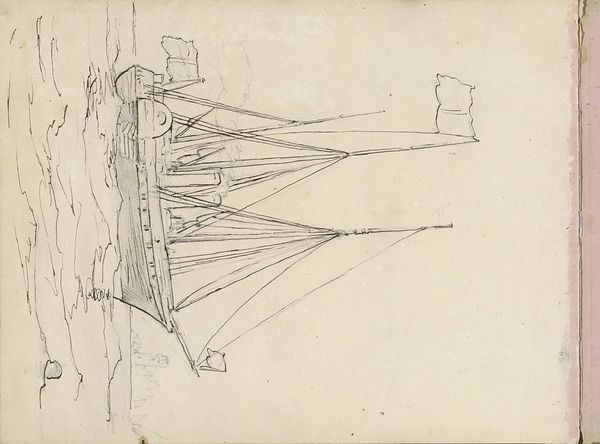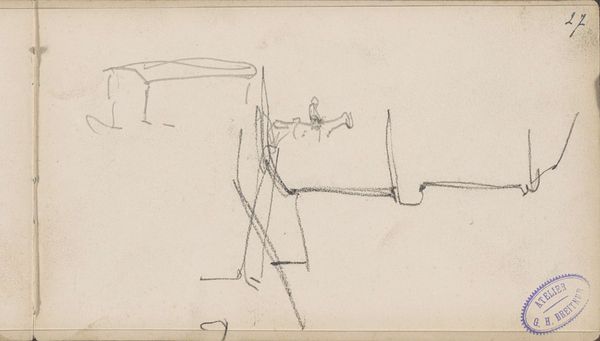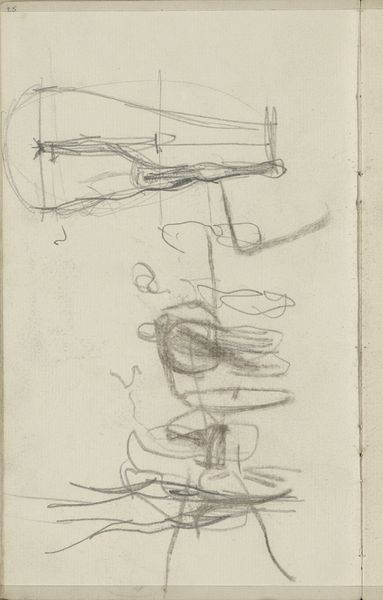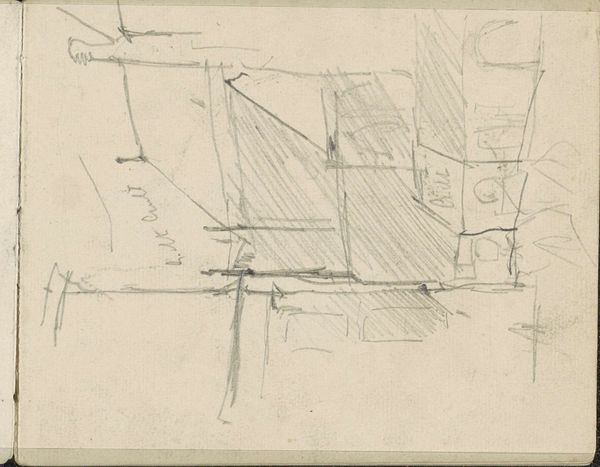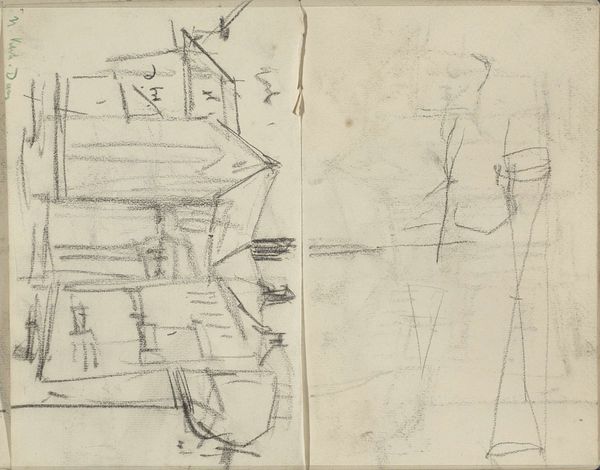
Brug over de Brouwersgracht te Amsterdam ter hoogte van de Binnen Brouwersstraat 1886 - 1903
0:00
0:00
Copyright: Rijks Museum: Open Domain
Editor: So, this is "Bridge over the Brouwersgracht in Amsterdam near the Binnen Brouwersstraat," a graphite drawing on toned paper by George Hendrik Breitner, dating from between 1886 and 1903. It's a very quick sketch, almost like a fleeting impression. What strikes you most about it? Curator: Well, what immediately jumps out is the sketch's almost defiant embrace of modernity. Breitner, often dubbed the 'painter of Amsterdam,' wasn’t just capturing a cityscape; he was capturing the pulse of a rapidly changing urban environment. Think about the period—late 19th century. Amsterdam was transforming into a bustling hub. Does the sketch convey that sensation to you? Editor: I can see that. It feels unfinished, almost chaotic, which matches the energy I associate with cities. What’s the significance of the bridge itself? Curator: Bridges, especially in a city defined by canals, served as crucial arteries. They facilitated commerce, communication, and social interaction. Breitner's choice to depict it underscores the significance of infrastructure in shaping urban life and social connections. We should consider what a 'bridge' represents conceptually too. What could the bridge symbolise? Editor: Maybe connection? Or the idea of moving from one place, one social class, to another? Curator: Precisely. And, considering Breitner’s documented fascination with capturing the ‘everyday,’ how do you see this sketch fitting into the broader art world's engagement with realism and naturalism at the time? Editor: It feels more immediate and less posed than traditional portraits or landscapes. It seems almost anti-establishment in its casualness. Curator: It certainly deviates from the polished Salon style of the time, favoring instead a gritty realism, deeply influenced by Impressionism but rooted in capturing the raw energy of urban life. Do you feel this work invites you in? Editor: Definitely. Seeing this, I get the sense I could understand Amsterdam at the time by simply turning the page. I can almost feel the city moving, it’s interesting to think about what this snapshot of the city conveys. Curator: Indeed. And reflecting upon Breitner's role in documenting the evolving urban landscape enriches our perspective not only of this artwork, but also urban history as a whole.
Comments
No comments
Be the first to comment and join the conversation on the ultimate creative platform.
